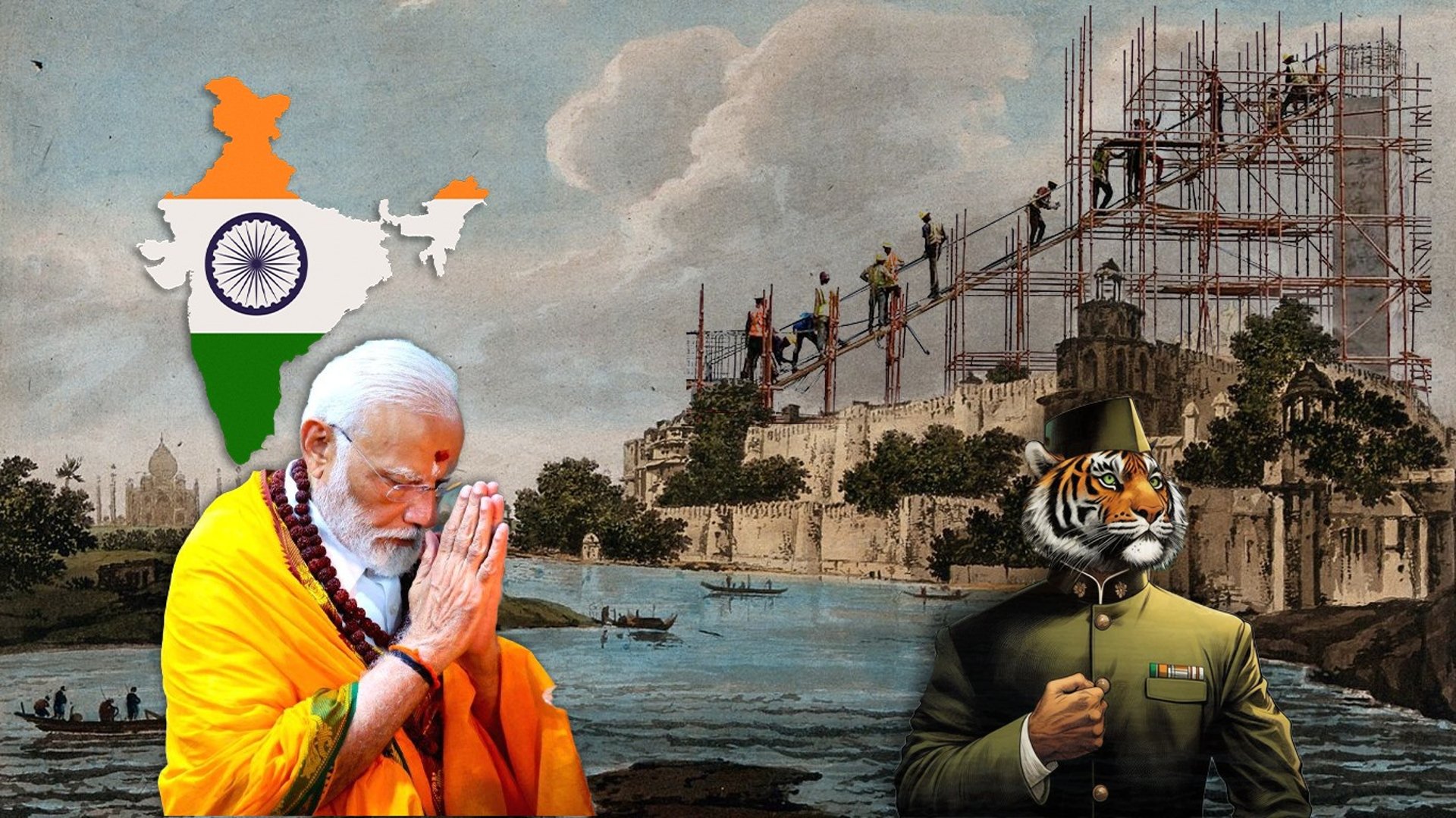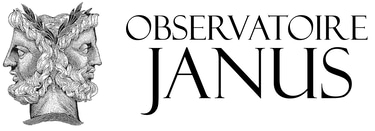India and increasing power through economics
India, long perceived as a developing economy, is now on the cusp of becoming a giant on the global stage. Anchored in a philosophy of multipolarity and self-reliance, India’s strategy for building power is the result of accelerated economic and political transformations, particularly under the leadership of Narendra Modi.
POWERTECHNOLOGY
Jules Basset

Over recent decades, India has undergone a revolution, transitioning from a primarily agrarian economy to an industrial and technological powerhouse. This process has been marked by deep economic reforms, rapid modernization, and strategic diversification of key sectors. Through targeted initiatives and international partnerships, the country continues to enhance its autonomy and global influence. Christian Harbulot's concept of "power building through the economy" provides a framework to understand this political and economic strategy aimed at positioning India as a global superpower.
India and the IT industry: a long-term strategy bearing fruit
As early as the late 1990s, India identified and leveraged strategic opportunities in the IT sector, marking the beginning of its economic ascent in this critical field. The Y2K scare was a major catalyst, creating a global need for system upgrades. India, with its abundance of skilled, English-speaking IT professionals, rose to the occasion. Companies like Infosys and Tata Consultancy Services quickly became leaders, providing software solutions and maintenance services to international clients. India’s ability to supply competent resources at competitive costs positioned it as a key player in the IT outsourcing industry.
Indian IT professionals displayed exceptional adaptability to global business practices, enabling their seamless integration into international teams and their ability to meet the diverse demands of the global market. Significant investments in continuous training programs by both the government and private sector ensured a highly skilled and flexible workforce ready to meet the challenges of the digital economy.
The rapid growth of India’s IT sector post-2000 led to the emergence of major tech hubs like Bangalore and Hyderabad. These cities became pivotal centers for the industry, supported by Special Economic Zones (SEZs) and technology parks that offered tax incentives and advanced infrastructure. Their success attracted massive foreign investments, further strengthening India’s position as a global leader in back-office outsourcing. Today, these hubs host technology giants like Google, Microsoft, and Amazon, which have established significant research and development centers in the country due to the skilled talent pool and business-friendly environment. India has become the world's "software factory," developing and maintaining the IT systems that underpin the global economy. However, to maintain its position, India must continue innovating and adapting to emerging technologies like artificial intelligence while addressing competition from other emerging markets in specific segments. Additionally, India is well-placed to expand its presence in the global semiconductor value chain. Success in this sector would further consolidate the gains made through its previous investments in IT and digital technologies.
Exploiting "post-patent" opportunities: generics and agrochemicals
India has also capitalized on segments of the pharmaceutical sector to emerge as a key global economic player. This success is partly attributable to specific legislative provisions regarding pharmaceutical patents, enabling Indian companies to develop and produce affordable generics. With an abundant and cost-effective scientific workforce, India has been able to supply competitively priced medicines to meet the growing global demand for affordable healthcare. Today, it is known as the "pharmacy of the world" and leads in the production of generic drugs. This targeted strategy in generics has also expanded internationally, as evidenced by the current attempt by Indian actors to acquire the French company Biogaran.
Similarly, the Indian agrochemical industry has asserted itself on the global stage using a similar model. India took advantage of patent expirations on key active ingredients to dominate the post-patent agrochemical market. One notable example is chlorantraniliprole, a widely used pesticide ingredient. The Indian government’s policy of not granting TRIPS-Plus measures (such as data exclusivity and patent term extensions) has significantly supported the local production of post-patent products. As a result, Indian producers quickly seized the opportunity to manufacture and export this product on a large scale. Backed by a skilled workforce and competitive production costs, this strategy has made India a global leader in this field. For example, India’s agrochemical exports have doubled over the past six years, increasing from $2.6 billion in 2017–2018 to $5.4 billion in 2022–2023.
This strategy has not only bolstered India’s economic self-reliance but has also enabled the country to play an essential role in global supply chains for critical sectors such as health and agriculture.
Modi: master planner of a liberal India
Since coming to power in 2014, Narendra Modi has positioned himself as a master planner for post-1990 liberal India. His objective is to harness the country’s economic potential to establish it as a global power. Modi has introduced a series of reforms and restructurings aimed at transforming India’s political and economic apparatus. These reforms simplify procedures for foreign investors while ensuring effective control of internal economic flows and combating corruption. Modi’s ambition appears to be transforming India into an economic powerhouse capable of competing with global superpowers like the United States and China.
The « Make in India » initiative was the cornerstone of this transformation. Launched in September 2014, this campaign seeks to position India as an industrial hub by encouraging domestic and international companies to manufacture their products in India. By simplifying administrative procedures and offering tax incentives, « Make in India » has attracted billions of dollars in FDI and created millions of jobs. The manufacturing sector has seen significant successes in industries such as automobiles, aerospace, and defense. For example, foreign investments in the aerospace industry rose significantly, from $93 million between 2011 and 2014 to $519 million between 2014 and 2017.
In addition, the Planning Commission was replaced in 2015 by the NITI Aayog, an initiative of Modi’s government. This national « think tank » provides strategic and technical advice to the central and state governments. Operating on the principle of « cooperative federalism, » the NITI Aayog promotes a bottom-up approach to policymaking, addressing some of the bureaucratic bottlenecks that have historically hindered foreign investment. This institution has also contributed to implementing « Make in India » by serving as a platform for collaboration between national and international experts. Furthermore, it formulates long-term strategic policies in critical areas such as agriculture, education, health, and infrastructure, supporting India’s broader goals of economic power building.
India and global power in the digital age
The Modi government has placed significant emphasis on India's digital transformation. Launched in 2015, the "Digital India" program aims to digitize India's economy by improving access to online public services, strengthening digital infrastructure, and promoting internet connectivity in rural areas. A key component of this initiative is "India Stack," a digital infrastructure introduced in 2009 and fully implemented from 2016 onwards. It offers a range of APIs (Application Programming Interfaces) for digital identity, electronic payments, and document authentication, facilitating digital transactions and financial inclusion. The demonetization of banknotes in 2016 further accelerated the adoption of digitalization, serving as a catalyst for reducing corruption and enabling greater traceability in financial transactions.
Additionally, the BharatNet project (replacing the National Optical Fibre Network in 2014) aims to connect all of India's rural areas to high-speed internet. While the results are still mixed, the initiative shows India's proactive approach to tackling the strategic economic challenges of the 21st century. With robust digital infrastructure and policies focused on innovation, India is well-positioned to become a global digital superpower, using its growing technological capabilities to further strengthen its economy and influence on the global stage.
For emerging powers, India may serve as a model for digital transformation. The country's approach, which combines advanced technological infrastructure with large-scale digital inclusion, could inspire other nations seeking to modernize their economies. India's digital infrastructure is already drawing international attention, with several countries planning to adopt the "India Stack" model for their own digital systems. This global adoption reinforces India's position not only as a leader in digital transformation but also as an exporter of advanced technological solutions, consolidating its economic, technological, and normative influence on a global scale.
Between the “Global South” and the West: Atmanirbhar Bharat and India’s return to power
As a member of the BRICS, India is asserting itself as a leader of the "Global South." Seeking to reduce its dependence on Western currencies, it closely follows the de-dollarization movement, which could pave the way for the rupee to play a larger role in regional trade. These initiatives aim to strengthen India’s economic sovereignty and promote the use of the rupee in international transactions. Simultaneously, India has also exported its digital innovations, such as the "India Stack" infrastructure and the "Aadhaar" identification system, to other emerging nations, thereby expanding its influence in the Global South. Furthermore, India is strengthening economic partnerships with African nations by investing in health, transportation, industry, and information technology, directly competing with China for influence on the continent.
Unlike Beijing, which seeks to create an alternative to the Western order, New Delhi positions itself as a bridge between the West and the Global South. For instance, India plays a central role in re-exporting sanctioned Russian oil, demonstrating its ability to navigate relationships between major global powers. Additionally, significant foreign direct investments from Western nations reinforce India’s position as a reliable ally. This dynamic is further solidified by alliances like the "I2U2" initiative, which includes India, the United States, the UAE, and Israel, showcasing India's efforts to gain a foothold in the strategically critical Middle East region. India’s approach lies in striking a balance between aligning neither entirely with China and the BRICS nor with the United States and the Western bloc (through alliances like the QUAD). This balanced approach allows India to maximize its economic and geopolitical advantages while maintaining strategic autonomy.
This analysis highlights a fundamental characteristic of India’s geopolitical strategy: multipolarity. The country’s strategy for power-building through its economy is rooted in this political philosophy, aiming for Indian autonomy and international equilibrium. The Atmanirbhar Bharat ("Self-Reliant India") initiative reflects this vision by striving to reduce India’s dependence on imports and bolster its domestic production capabilities. By continuing to diversify its international partnerships and investing in strategic infrastructure, India is well-positioned to play a leading role on the global stage. Anchored in a philosophy of multipolarity and self-reliance, this strategy could make India a model for other emerging powers while consolidating its own geoeconomic and geopolitical influence.
